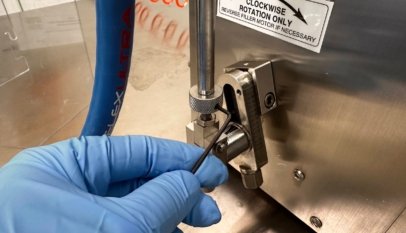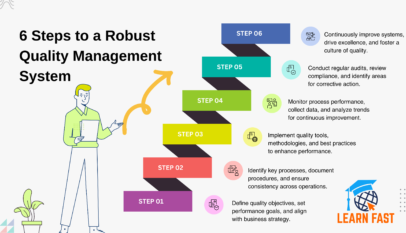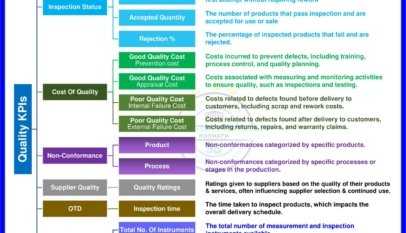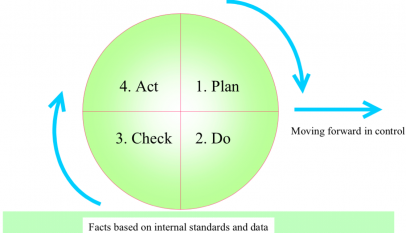Integrating Lean and Six Sigma methodologies in the form of A3 DMAIC (Define, Measure, Analyze, Improve, and Control) has emerged as a powerful approach for continuous improvement in various industries. This post aims to understand A3 DMAIC’s benefits and applications comprehensively. The study includes a detailed examination of the process, its key components, and how it can be successfully implemented in organizations. The post also provides real-world examples and case studies to illustrate the effectiveness of the A3 DMAIC approach in achieving process improvement and enhancing organizational performance.
- Introduction
Lean and Six Sigma are well-established methodologies for continuous improvement, each with its tools and techniques. Lean focuses on eliminating waste and streamlining processes, while Six Sigma aims to reduce variability and defects. A3 DMAIC is an integrated approach that combines the strengths of both methodologies, providing a systematic framework for identifying, analyzing, and improving processes.
- A3 DMAIC Framework
A3 DMAIC is an acronym for the five key phases of the process: Define, Measure, Analyze, Improve, and Control. The approach is centred around the A3 problem-solving tool, a single-sheet document used to capture the key information, analysis, and proposed actions related to a problem. The A3 report is typically divided into sections corresponding to each DMAIC phase.
2.1 Define
The Define phase involves identifying the problem, its scope, and the project’s objectives. It includes gathering stakeholder input, defining the process boundaries, and establishing project goals and metrics. This phase sets the foundation for the entire project, ensuring that the team clearly understands the problem and the desired outcome.
2.2 Measure
The Measure phase is focused on collecting data and establishing baseline performance for the process being improved. This includes identifying critical process inputs and outputs, selecting appropriate measurement systems, and capturing data to quantify the current process performance. The data collected in this phase serves as a basis for comparing and assessing the effectiveness of the improvements made in later stages.
2.3 Analyze
During the Analyze phase, the team utilizes various analytical tools and techniques to identify the root causes of the problem and prioritize potential improvement opportunities. This may involve statistical analysis, process mapping, value stream mapping, and other tools to identify the sources of variability, waste, and inefficiency.
2.4 Improve
The team develops, tests, and implements solutions to address the identified root causes in the Improve phase. This involves generating and evaluating potential solutions, conducting pilot tests, and refining the proposed improvements based on the results. This phase focuses on making data-driven decisions to achieve the desired process improvement and performance enhancements.
2.5 Control
The Control phase aims to sustain the gains achieved through the improvements made in the previous phases. This involves establishing control plans, monitoring performance, and updating documentation and training materials to maintain improvements over time. The control phase also includes reviewing the project results to identify lessons learned and opportunities for further improvement.
- Benefits and Applications of A3 DMAIC
A3 DMAIC offers numerous benefits for organizations seeking to achieve continuous improvement. Some of the key advantages include the following:
3.1 Enhanced problem-solving: By incorporating Lean and Six Sigma methodologies, A3 DMAIC provides a structured approach to problem-solving that facilitates the identification of root causes and the development of effective solutions.
3.2 Improved communication and collaboration: The A3 report serves as a visual and concise representation of the problem, analysis, and proposed actions, promoting transparency and collaboration among team members and stakeholders.
3.3 Cost savings and efficiency gains: By targeting waste and variability, A3 DMAIC enables organizations to achieve significant cost savings and efficiency improvements in their processes.
3.4 Increased customer satisfaction: The focus on improving process performance and reducing defects ultimately leads to enhanced product and service quality, resulting in higher levels of customer satisfaction.
The A3 DMAIC template can be downloaded here
A3 DMAIC has been successfully applied in various industries, including manufacturing, healthcare, finance, and information technology. The versatility of the approach allows it to be adapted to a wide range of process improvement and organizational performance enhancement initiatives.
- Case Studies and Real-World Examples
4.1 Manufacturing
A large automotive manufacturing company employed A3 DMAIC to address production line efficiency and product quality issues. The team identified several root causes through the analysis phase, including excessive setup times, equipment downtime, and process variability. By implementing targeted improvements, the company achieved a 30% reduction in setup times, a 25% decrease in equipment downtime, and a 20% reduction in product defects.
4.2 Healthcare
A hospital utilized A3 DMAIC to improve its patient admission process, characterized by long wait times and patient dissatisfaction. The team identified inefficiencies in the process flow, inadequate staffing, and lack of standardization as key contributors to the problem. The implemented improvements included streamlining the admission process, optimizing staffing levels, and standardizing procedures, resulting in a 40% reduction in patient wait times and increased patient satisfaction.
- Conclusion
A3 DMAIC offers a robust framework for continuous improvement, combining the strengths of Lean and Six Sigma methodologies. By following the structured approach of Define, Measure, Analyze, Improving, and Control, organizations can systematically identify, analyze, and address process inefficiencies and variability. Using the A3 report as a communication tool further enhances the approach’s effectiveness by promoting transparency and collaboration among team members and stakeholders.
The benefits of A3 DMAIC, including cost savings, efficiency gains, and increased customer satisfaction, make it a valuable tool for organizations in various industries seeking to enhance their performance and competitiveness. Real-world examples and case studies demonstrate the practical application and effectiveness of the approach in achieving meaningful and sustainable process improvements. As organizations continue to face increasing pressures to innovate and optimize their operations, adopting A3 DMAIC is expected to grow in popularity as a proven and reliable methodology for continuous improvement.
The A3 DMAIC template can be downloaded here
















